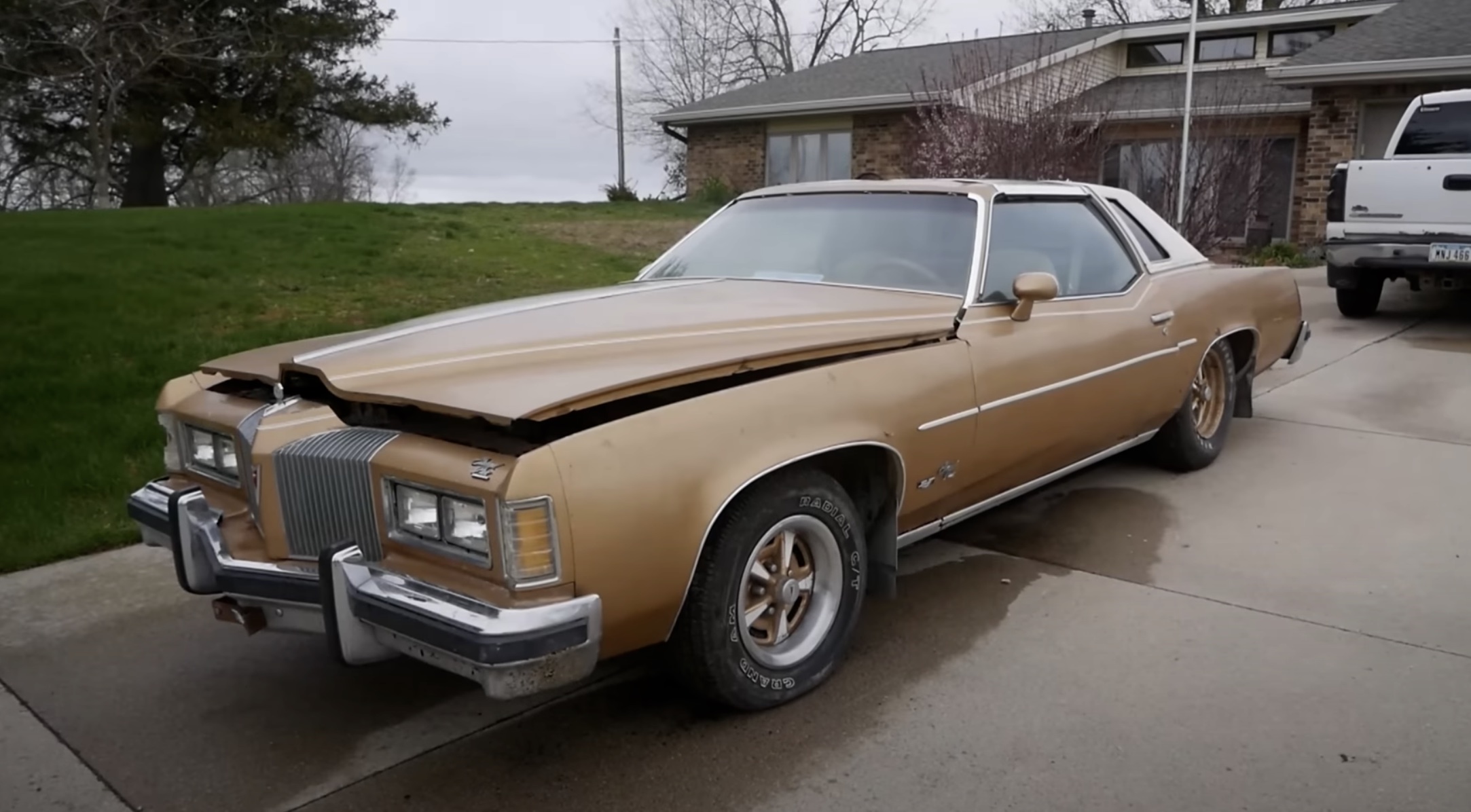There is no doubt that there is a stark difference in styling trends between the Musclecar Era and the Brougham Epoch that followed. 1960s cars were straight, crisp, purposeful. Early 1970s cars favored aerodynamic workings and added style to the substance. But by the mid-1970s, the power was gone and styling went full-on baroque. Buyers could soothe the pain of a 200-horsepower big-block sled by having a comfortable, well-heeled 200-horsepower big-block sled. And manufacturers did everything they could do to class up the joint. Chevrolet’s Monte Carlo, Oldsmobile’s Cutlass and Chrysler’s Cordoba pulled this trick off nicely. Others…well, is there a reason to be kind? Ford’s Elite was an odd duck and the LTD II that followed was a Lincoln clone at bargain-basement prices. The Dodge Charger was a grille swap away from the Cordoba and was miles from what a Charger should have been.
But the most egregious of them all was Pontiac. The Grand Prix literally wrote the book on personal luxury coupes, with Bill Mitchell styling to die for and strong Tin Indian power. But by 1976, you had to wonder what happened. They still ran strong considering the era, but the styling…woof. If you could consider a car a “butterface”, this one is it. (And if you don’t know that term, go do your research.)
Dalton recently found a top-tier example of a disco-era Grand Prix to pick up. It’s a 50th Anniversary Edition, which means gold paint, T-tops, Rally II wheels, and some other goodies. It’s also in Dalton’s price range…that means cracked T-top glass, an interior that should probably be burned, at least one major brake issue, and other signs that this is a car that has precisely zero will to live. Godspeed, sir, and good luck.























